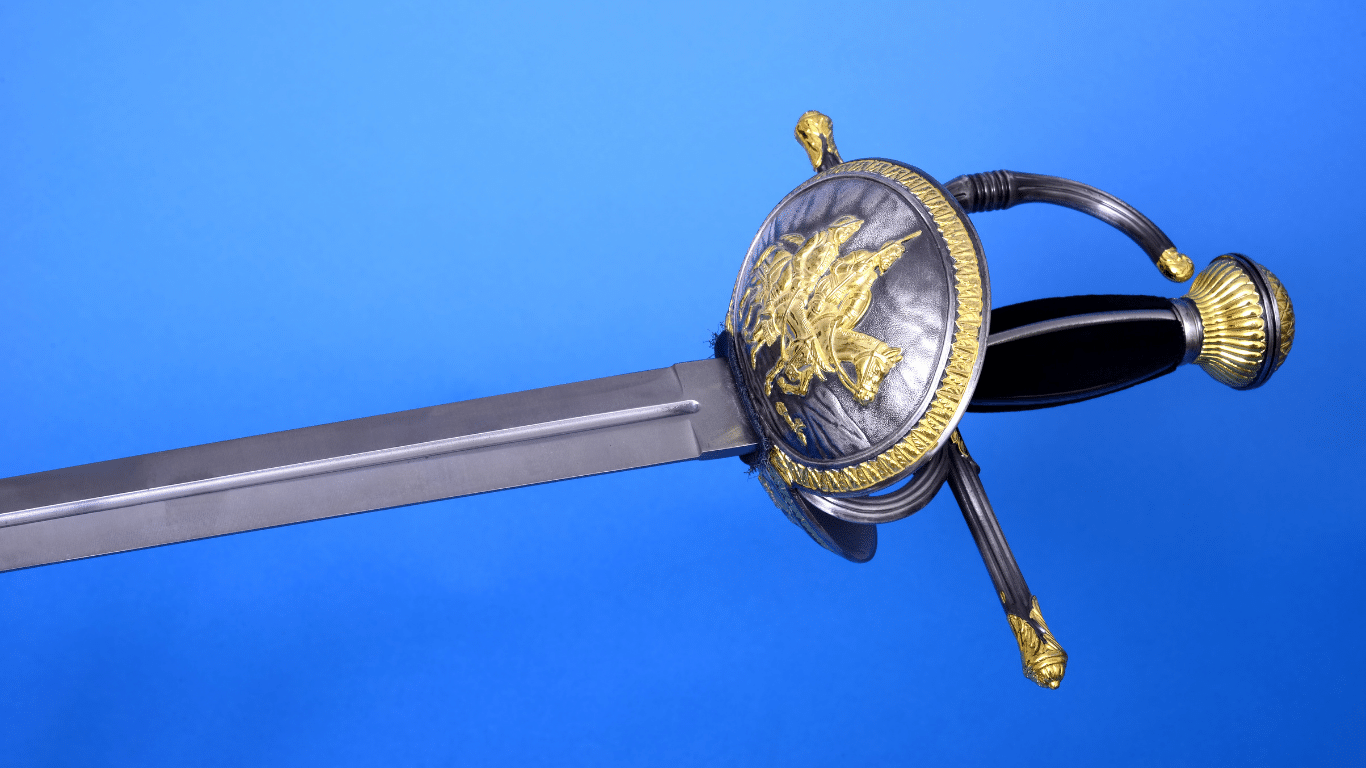In the field of edged weapons, the Rapier emerges as a distinctive masterpiece, weaving together elegance and lethal precision. Originating in 16th-century Europe, the Rapier transcends the boundaries of conventional swords, standing as a testament to the craftsmanship and sophistication of its time. In this exploration, we unravel the mystique surrounding the Rapier, dissecting its unique characteristics and discerning the factors that set it apart from its bladed counterparts.
The Essence of the Rapier:
At its core, the Rapier is a specialized sword designed for thrusting attacks. Unlike broader swords optimized for slashing through armor or adversaries, the Rapier’s design pivots on finesse, agility, and the art of the precise strike. Its slender, elongated blade and ornate hilt exemplify the harmonious blend of form and function.
Anatomy of the Rapier:
Blade Dynamics: The Rapier’s blade, extending between 35 to 45 inches, distinguishes itself with its length and narrowness. This elongated blade serves a dual purpose – extending the reach of the fencer while minimizing the weight for nimble maneuverability.
Elaborate Hilt Design: The Rapier’s hilt stands out as a canvas for intricate craftsmanship. Featuring a complex guard, the hilt serves not only to protect the hand but also to enhance the sword’s aesthetic appeal. This attention to detail in the hilt sets the Rapier apart as a work of art, reflecting the cultural appreciation for both function and elegance.
Defining Factors:
Thrusting Expertise: Unlike slashing counterparts such as the longsword or saber, the Rapier excels in thrusting motions. Its design encourages precise, controlled attacks, making it a formidable weapon for one-on-one combat and dueling scenarios.
Agility and Maneuverability: The Rapier’s lightweight construction improves the fencer’s agility. This emphasis on swift and intricate movements allows for strategic positioning and rapid responses, distinguishing it from heavier, more cumbersome swords.
Cultural Significance: Beyond its role as a weapon, the Rapier carries cultural weight. It became a symbol of status and refinement, favored by the cultured elite. The prominence of the Rapier in Renaissance art and literature reflects not just its functional utility but its integration into a broader cultural narrative.
Historical Reverberations:
The Rapier’s historical significance echoes through the corridors of time. Its association with dueling culture and its prevalence among the aristocracy solidify its place as more than a mere weapon. Instead, it becomes a symbol of personal honor, skill, and the evolving social dynamics of its era.
Evolution into Modern Fencing:
As the landscape of warfare evolved with the advent of firearms, the role of traditional swords diminished. However, the legacy of the Rapier endured in the world of sports fencing. Modern fencing, an Olympic discipline, draws inspiration from Rapier’s techniques, emphasizing speed, precision, and strategic thinking.
Pop Culture Immortality:
The Rapier’s allure continues to captivate contemporary audiences, transcending its historical roots. Whether depicted in classic literature, staged duels, or cinematic spectacles, the Rapier retains its status as a symbol of swashbuckling elegance, embodying themes of adventure, romance, and honor.
Conclusion:
In the grand tapestry of edged weapons, the Rapier emerges not merely as a tool of combat but as a work of art, a testament to human ingenuity and the pursuit of precision. Its slender frame, ornate hilt, and cultural significance paint a vivid picture of an era where the sword was more than a weapon—it was an extension of one’s identity. As we peel back the layers of history, the Rapier stands proudly, a timeless symbol of elegance and a chronicle of an ancient martial arts culture. In the dance of blades, the Rapier’s legacy endures, inviting us to appreciate the delicate balance between form and function in the world of swords.

